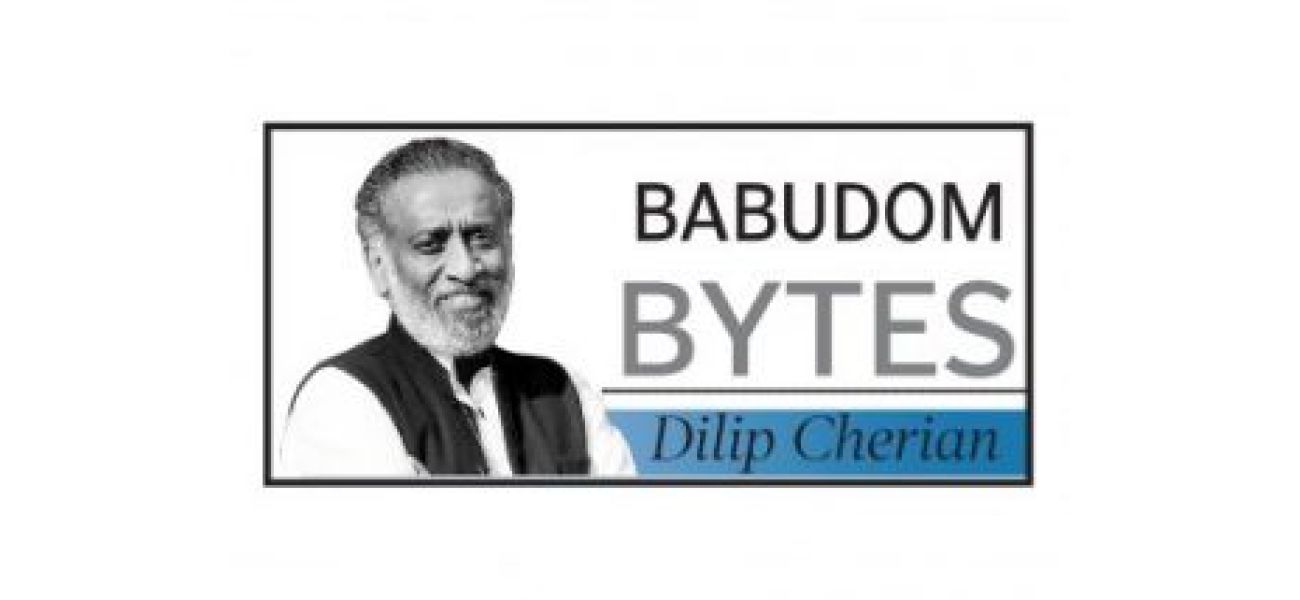Quick ascent up a mountain in the midst of a storm.
Sujit Kumar's quick transition from a government official to a BJP MLA in just 51 days has caught the attention of many in the service industry, as it usually takes much longer to make such a change.
November 22nd 2025.

In the world of babudom bureaucracy, where things generally move at a snail's pace, there was one man who defied all odds and rose up the ranks in record time. Sujit Kumar's success story has left many in the service circles amazed and impressed. In just 51 days, he went from being a Principal Commissioner in Delhi to a BJP MLA from Gaura Bauram in Darbhanga, Bihar. This is a feat that would usually take months of paperwork, clearances, and political negotiations. It's no wonder that his timeline has raised quite a few eyebrows.
The sequence of events speaks for itself. On September 13, the Central Board of Direct Taxes (CBDT) issued a promotion list, which included 20 officers of the 2001 batch of Indian Revenue Service- Income Tax (IRS-IT) at a level that many of their Indian Administrative Service (IAS) counterparts are still working towards. Sujit Kumar was one of those officers. Just ten days later, he and the others were given postings at their upgraded grade. On September 25, he applied for voluntary retirement. Instead of the usual three-month wait, his request was cleared by the Rashtrapati Bhavan in just 15 days. It was on October 13 that he officially joined the BJP, and within 24 hours, he was named as a candidate. The very next day, he filed his nomination and eventually went on to win the election on November 14.
What makes this speedy progression even more remarkable is the stark contrast with others who have entered politics through the conventional route. Take for instance, former IAS officer RK Singh, who was once a Union minister but was recently dismissed from the BJP for speaking out of turn. However, Sujit Kumar's transition has been remarkably smooth, and hopefully, he will not face any such turbulence in his political career. It is evident that his journey has been carefully planned and orchestrated, with powerful patrons ensuring that things fell into place seamlessly.
However, this does not in any way suggest that Sujit Kumar lacks merit. He is widely regarded as a bright, ambitious, and politically aware individual. But many believe that this chain of events, from his promotion, voluntary retirement, ticket allocation, and electoral victory, would not have aligned so perfectly without the backing of powerful figures in Delhi.
In the wake of a decisive victory in Bihar, the Modi government has signaled a significant bureaucratic reset, which goes far beyond the usual reshuffling. The most telling move was the appointment of V. Srinivas as the new Chief Secretary of Rajasthan. A 1989-batch IAS officer with extensive experience at the Central level, Srinivas was not simply repatriated to his home state, but strategically placed in a key position. His previous role as Union Secretary in Administrative Reforms, Pensions, and Grievances gave him a unique perspective and insight into the Centre's governance strategies. Now, he is expected to bring that same mindset to the secretariat in Jaipur.
What makes this move even more intriguing is the timing and the duration of his tenure. Srinivas is due to retire in September 2026, which means he has less than a year and a half in the hot seat, unless the government grants him an extension. This short runway strongly suggests that he has been given a targeted mission: to push through significant administrative alignments, strengthen state-Centre coordination, and ensure that Rajasthan's bureaucracy works in harmony with national priorities. In simple terms, he is not there for a leisurely stroll in the park.
Meanwhile, his predecessor, Sudhansh Pant, has been summoned back to Delhi and temporarily assigned as the Officer on Special Duty in the Cabinet Secretariat before taking over as the Secretary of Social Justice and Empowerment next year.
But the action does not stop in Jaipur. Observers are expecting significant changes at the Centre as well. Several senior positions, including the Ministry of Petroleum & Natural Gas and the Ministry of Empowerment of Persons with Disabilities, remain vacant. It is evident that Prime Minister Narendra Modi is keeping these key positions open while recalibrating the administration in line with political priorities.
This is just the beginning. Many in Delhi believe that the real action is yet to come at the political level. With crucial Secretary posts at the Centre lying vacant and senior officers being quietly reassigned, it is clear that the groundwork is being laid for something bigger. The buzz in power corridors is loud and clear: a Union Cabinet reshuffle may be just around the corner. Some non-performing ministers may be shown the door, and new faces may be brought in, with a major realignment of portfolios.
There is a major shift happening in the Central Armed Police Forces (CAPFs). For decades, these forces have been living with what many officers refer to, albeit jokingly, as the "IPS occupation." However, the Supreme Court has now set a withdrawal date for IPS deputations. With the Court dismissing the Centre's review plea, the judgment passed in May 2025, which orders a phased reduction of IPS deputations, has become irreversible. There is even a timer set for the transition, giving them only two years. No extensions, no room for ambiguity.
At present, half of all Inspector General (IG) posts and one-fifth of Deputy Inspector General (DIG) posts in the CAPFs are reserved for IPS officers. This has had a significant impact on the careers, morale, and internal hierarchies of these forces for decades. Many CAPF officers have had to wait for 30 years before getting a chance at an IG rank, only to see a young IPS officer swoop in, rise up the ranks, and leave. It is not surprising that the IPS fraternity is worried. They argue that IPS leadership is necessary for functional reasons, lateral talent infusion, and national security coordination. However, this argument falls flat when we consider that CAPF officers themselves are responsible for running modern counter-insurgency operations, managing hundreds of thousands of personnel in remote areas, and leading units that resemble light infantry more than civil police.
The Supreme Court did not buy into the security concerns raised by the IPS officers either. It pointed out the obvious- that stagnation kills morale, and morale is crucial for forces tasked with safeguarding everything from Maoist strongholds to the borders with Pakistan. The judgment also brought about a quiet revolution by stating that the CAPFs must be treated as full Organized Group A Services for cadre matters. In simple terms, this means that they should not be treated as borrowed labor.
One interesting piece of data that the government put forth in its defense was that IPS officers make up only 1.4% of the CAPF Group A executive cadre. However, it is this tiny segment that decides who gets promoted.
Will this sudden change dismantle the influence of IPS overnight? It is highly unlikely. The turf war will now move into various committees, where cadre reviews, service rules, and bureaucratic battles will take place. However, one thing is clear- a significant shift has taken place.
The sequence of events speaks for itself. On September 13, the Central Board of Direct Taxes (CBDT) issued a promotion list, which included 20 officers of the 2001 batch of Indian Revenue Service- Income Tax (IRS-IT) at a level that many of their Indian Administrative Service (IAS) counterparts are still working towards. Sujit Kumar was one of those officers. Just ten days later, he and the others were given postings at their upgraded grade. On September 25, he applied for voluntary retirement. Instead of the usual three-month wait, his request was cleared by the Rashtrapati Bhavan in just 15 days. It was on October 13 that he officially joined the BJP, and within 24 hours, he was named as a candidate. The very next day, he filed his nomination and eventually went on to win the election on November 14.
What makes this speedy progression even more remarkable is the stark contrast with others who have entered politics through the conventional route. Take for instance, former IAS officer RK Singh, who was once a Union minister but was recently dismissed from the BJP for speaking out of turn. However, Sujit Kumar's transition has been remarkably smooth, and hopefully, he will not face any such turbulence in his political career. It is evident that his journey has been carefully planned and orchestrated, with powerful patrons ensuring that things fell into place seamlessly.
However, this does not in any way suggest that Sujit Kumar lacks merit. He is widely regarded as a bright, ambitious, and politically aware individual. But many believe that this chain of events, from his promotion, voluntary retirement, ticket allocation, and electoral victory, would not have aligned so perfectly without the backing of powerful figures in Delhi.
In the wake of a decisive victory in Bihar, the Modi government has signaled a significant bureaucratic reset, which goes far beyond the usual reshuffling. The most telling move was the appointment of V. Srinivas as the new Chief Secretary of Rajasthan. A 1989-batch IAS officer with extensive experience at the Central level, Srinivas was not simply repatriated to his home state, but strategically placed in a key position. His previous role as Union Secretary in Administrative Reforms, Pensions, and Grievances gave him a unique perspective and insight into the Centre's governance strategies. Now, he is expected to bring that same mindset to the secretariat in Jaipur.
What makes this move even more intriguing is the timing and the duration of his tenure. Srinivas is due to retire in September 2026, which means he has less than a year and a half in the hot seat, unless the government grants him an extension. This short runway strongly suggests that he has been given a targeted mission: to push through significant administrative alignments, strengthen state-Centre coordination, and ensure that Rajasthan's bureaucracy works in harmony with national priorities. In simple terms, he is not there for a leisurely stroll in the park.
Meanwhile, his predecessor, Sudhansh Pant, has been summoned back to Delhi and temporarily assigned as the Officer on Special Duty in the Cabinet Secretariat before taking over as the Secretary of Social Justice and Empowerment next year.
But the action does not stop in Jaipur. Observers are expecting significant changes at the Centre as well. Several senior positions, including the Ministry of Petroleum & Natural Gas and the Ministry of Empowerment of Persons with Disabilities, remain vacant. It is evident that Prime Minister Narendra Modi is keeping these key positions open while recalibrating the administration in line with political priorities.
This is just the beginning. Many in Delhi believe that the real action is yet to come at the political level. With crucial Secretary posts at the Centre lying vacant and senior officers being quietly reassigned, it is clear that the groundwork is being laid for something bigger. The buzz in power corridors is loud and clear: a Union Cabinet reshuffle may be just around the corner. Some non-performing ministers may be shown the door, and new faces may be brought in, with a major realignment of portfolios.
There is a major shift happening in the Central Armed Police Forces (CAPFs). For decades, these forces have been living with what many officers refer to, albeit jokingly, as the "IPS occupation." However, the Supreme Court has now set a withdrawal date for IPS deputations. With the Court dismissing the Centre's review plea, the judgment passed in May 2025, which orders a phased reduction of IPS deputations, has become irreversible. There is even a timer set for the transition, giving them only two years. No extensions, no room for ambiguity.
At present, half of all Inspector General (IG) posts and one-fifth of Deputy Inspector General (DIG) posts in the CAPFs are reserved for IPS officers. This has had a significant impact on the careers, morale, and internal hierarchies of these forces for decades. Many CAPF officers have had to wait for 30 years before getting a chance at an IG rank, only to see a young IPS officer swoop in, rise up the ranks, and leave. It is not surprising that the IPS fraternity is worried. They argue that IPS leadership is necessary for functional reasons, lateral talent infusion, and national security coordination. However, this argument falls flat when we consider that CAPF officers themselves are responsible for running modern counter-insurgency operations, managing hundreds of thousands of personnel in remote areas, and leading units that resemble light infantry more than civil police.
The Supreme Court did not buy into the security concerns raised by the IPS officers either. It pointed out the obvious- that stagnation kills morale, and morale is crucial for forces tasked with safeguarding everything from Maoist strongholds to the borders with Pakistan. The judgment also brought about a quiet revolution by stating that the CAPFs must be treated as full Organized Group A Services for cadre matters. In simple terms, this means that they should not be treated as borrowed labor.
One interesting piece of data that the government put forth in its defense was that IPS officers make up only 1.4% of the CAPF Group A executive cadre. However, it is this tiny segment that decides who gets promoted.
Will this sudden change dismantle the influence of IPS overnight? It is highly unlikely. The turf war will now move into various committees, where cadre reviews, service rules, and bureaucratic battles will take place. However, one thing is clear- a significant shift has taken place.
[This article has been trending online recently and has been generated with AI. Your feed is customized.]
[Generative AI is experimental.]
0
0
Submit Comment





